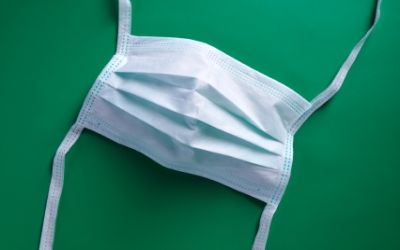Health System Achieves High Flu Vaccination Rates by Mandating Masking

Geisinger Health System vaccinated more than 92 percent of all employees against influenza this season, with a modification of a mandatory program. On average, fewer than half of all healthcare workers receive flu vaccinations.
In an article published in Julys Infection Control and Hospital Epidemiology, Dr. Lisa Esolen demonstrated the effectiveness of Geisingers influenza vaccination that helped achieve high rates of vaccine compliance for two consecutive years. This past season, 2010-2011, Geisinger had vaccinated 95 percent of clinical employees and 92 percent of all employees by mid-December. Since hospitals continue to release vaccine until the end of March, final vaccination rates were not known at that the time of this publication.
"Influenza vaccination rates among hospital employees has received extensive attention in recent years," says Lisa Esolen, MD, systems director of infection control for Geisinger Health System. "Healthcare workers are critical to limiting the spread of influenza since they are exposed to numerous sick patients and can readily spread the infection from patient to patient."
To increase vaccination rates among staff, some hospitals have embraced a mandatory approach get vaccinated or lose your job. However, Geisinger Health System chose a slightly different approach. The 14,000-employee system decided to allow staff members to opt out of receiving the flu vaccine for ethical or medical reasons, but required that those who did opt out would need to wear a facemask for the entire flu season, extending from November 1 to March 31. All vaccinated employees were known by a campaign sticker placed on their identification badge no sticker meant the employee needed to wear a mask whenever they were within five or six feet of any other person throughout the entire day.
"Were proud of the success we had and the team building it inspired, encouraging each unit to act as a team to achieve full vaccination." Esolen adds.
Unraveling a Candida auris Outbreak: Infection Control Challenges in a Burn ICU
March 19th 2025A Candida auris outbreak in a burn intensive care unit (BICU) in Illinois has highlighted the persistent challenges of infection control in high-risk health care settings. Despite rigorous containment efforts, this multidrug-resistant fungal pathogen continued to spread, underscoring the need for enhanced prevention strategies, environmental monitoring, and genomic surveillance.
Unmasking Long COVID: Dr Noah Greenspan on Recovery, Research Gaps, and the Future of Treatment
March 18th 2025Dr Noah Greenspan discusses the evolving understanding of long COVID, current treatment strategies, diagnostic challenges, and the critical need for research and awareness in post-viral syndromes.